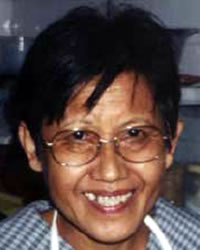Han Chinese, Teochew in Cambodia

Photo Source:
Copyrighted © 2026
Southeast Asia Link - SEALINK All rights reserved. Used with permission |
Send Joshua Project a map of this people group.
|
| People Name: | Han Chinese, Teochew |
| Country: | Cambodia |
| 10/40 Window: | Yes |
| Population: | 10,000 |
| World Population: | 1,775,000 |
| Primary Language: | Chinese, Min Nan |
| Primary Religion: | Ethnic Religions |
| Christian Adherents: | 1.40 % |
| Evangelicals: | 0.40 % |
| Scripture: | Complete Bible |
| Ministry Resources: | Yes |
| Jesus Film: | Yes |
| Audio Recordings: | Yes |
| People Cluster: | Chinese |
| Affinity Bloc: | East Asian Peoples |
| Progress Level: |
|
Introduction / History
Chinese Cambodians are a group of ethnic minorities of Chinese descent living in Cambodia. There are 5 ethno-linguistic groups among Chinese Cambodians which include Teochew, Cantonese, Hokkien, Hakka and Hainanese, the majority having Teochew ethnicity. These Chinese peoples began to migrate to Cambodia as early as the 3rd century, coming in waves due to wars, political pressures and economic hardships. Over the years many of the Chinese intermarried with the Khmer and were absorbed into Khmer culture, introducing Chinese customs and beliefs into Khmer society. But there remains a community of Chinese Cambodians who speak Khmer yet have retained the distinctiveness of their own language and culture.
During the Democratic Kampuchea regime (1975–1979), the Khmer Rouge sought to persecute and purge the Chinese from Cambodian society. Attempting to escape extermination, many Chinese fled to neighboring Vietnam, while others tried to mix with Cambodian villagers, passing themselves off as peasants. In 1979, the Chinese returned and settled primarily in the population centers of the country, particularly Phnom Penh.
What Are Their Lives Like?
Nearly all Chinese Cambodians are involved in a business of one sort or another, ranging from small family-based shops to large companies. Most Chinese own retail sales shops, having converted their homes into street-side stores or selling in small market stalls. Most Chinese do business day in and day out without taking time off for rest, working from early morning to well into the evening. However, during the Chinese New Year celebrations most Chinese will stop doing business for 3 or 4 days to celebrate with their families and travel.
Chinese food, traditional medicines, decorations and religious paraphernalia are found in abundance in Phnom Penh. Chinese noodle shops and cafés cover the city and are enjoyed by Chinese and Khmer alike.
What Are Their Beliefs?
Chinese Cambodians hold to traditional Chinese religious practices, ancestral worship, demon veneration and Theravada Buddhism. It is common to find an entire wall in their homes covered with altars to a pantheon of gods, as well as food sacrifices and incense burning in their shops.
Even though religious beliefs are expressed in a variety of ways, the true god of the Chinese is money. It is out of fear, not love, that Chinese Cambodians serve these gods, for to not offer sacrifices and burn incense to them is to invite disaster – poverty, sickness and bad luck.
What Are Their Needs?
Although economically more stable than average, few Chinese Cambodians have heard a clear presentation the gospel. Demonic strongholds and searching for wealth have been strong barriers, causing the good news to fall on deaf ears.
Prayer Points
Ask God to give the growing Chinese church a vision for reaching the Teochew Chinese in Cambodia, and to send out loving workers who can break through the spiritual, economic and linguistic barriers.
Pray that the Holy Spirit will cause the Teochew Chinese to long for a God who loves them and wants what is best for them.
Ask God to break down demonic barriers and barriers of materialism to reach the hearts of the Teochew Chinese.
Pray for a Disciple Making Movement among the Teochew Chinese that would see entire families drawn to the gospel and multiplying their faith.